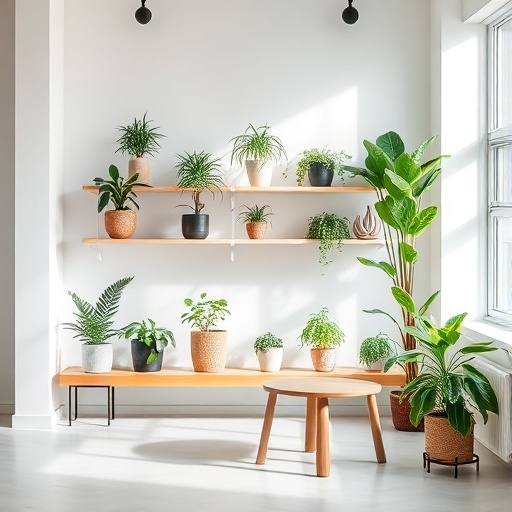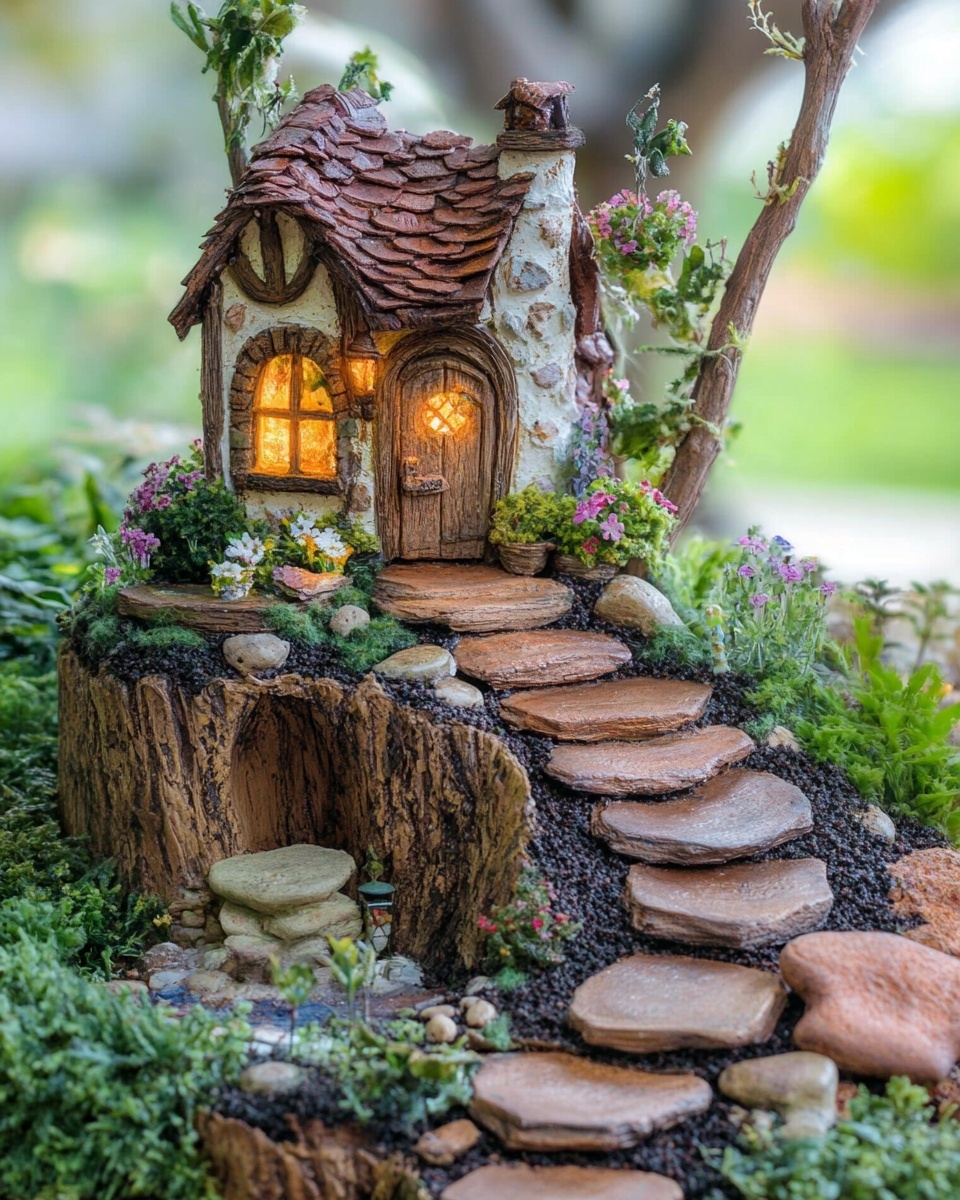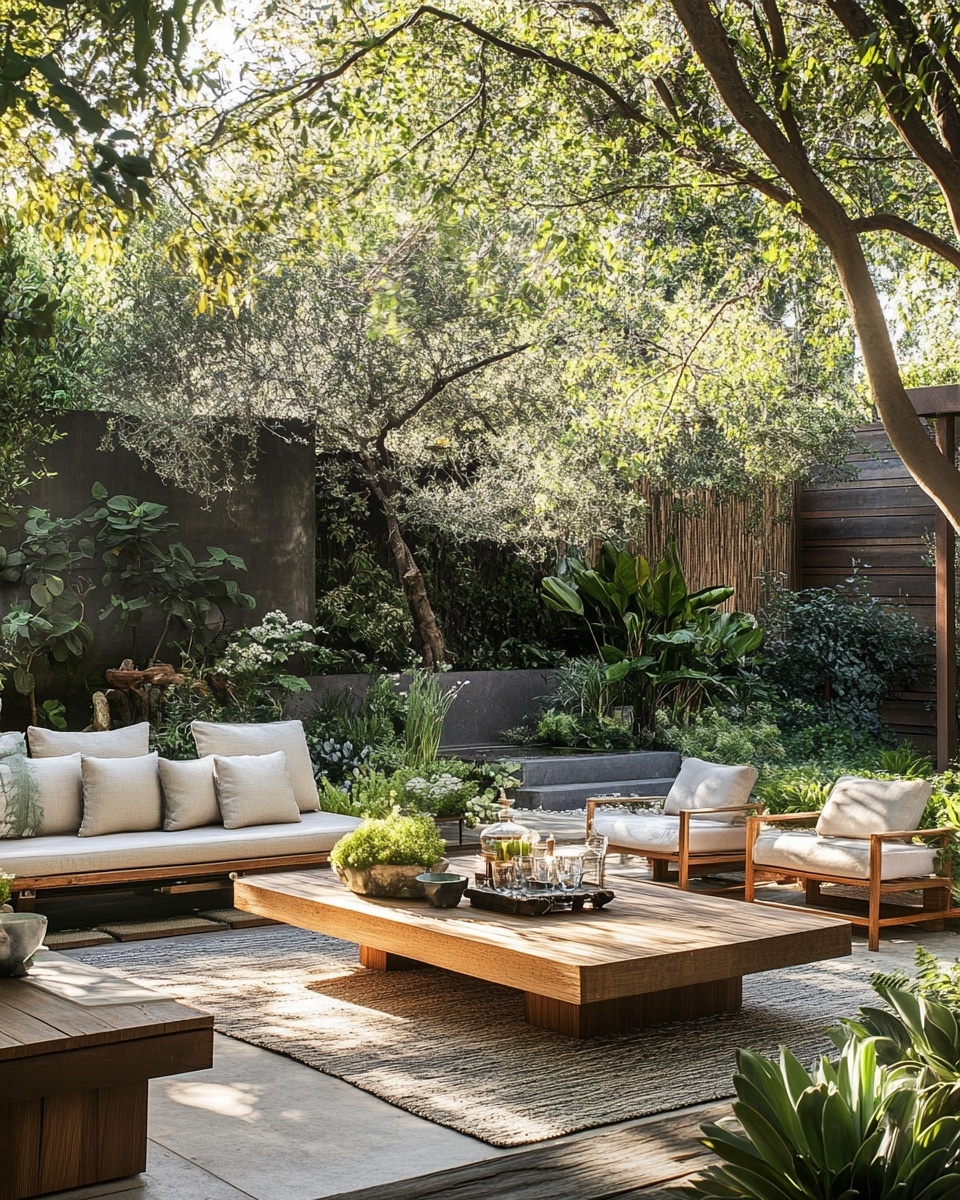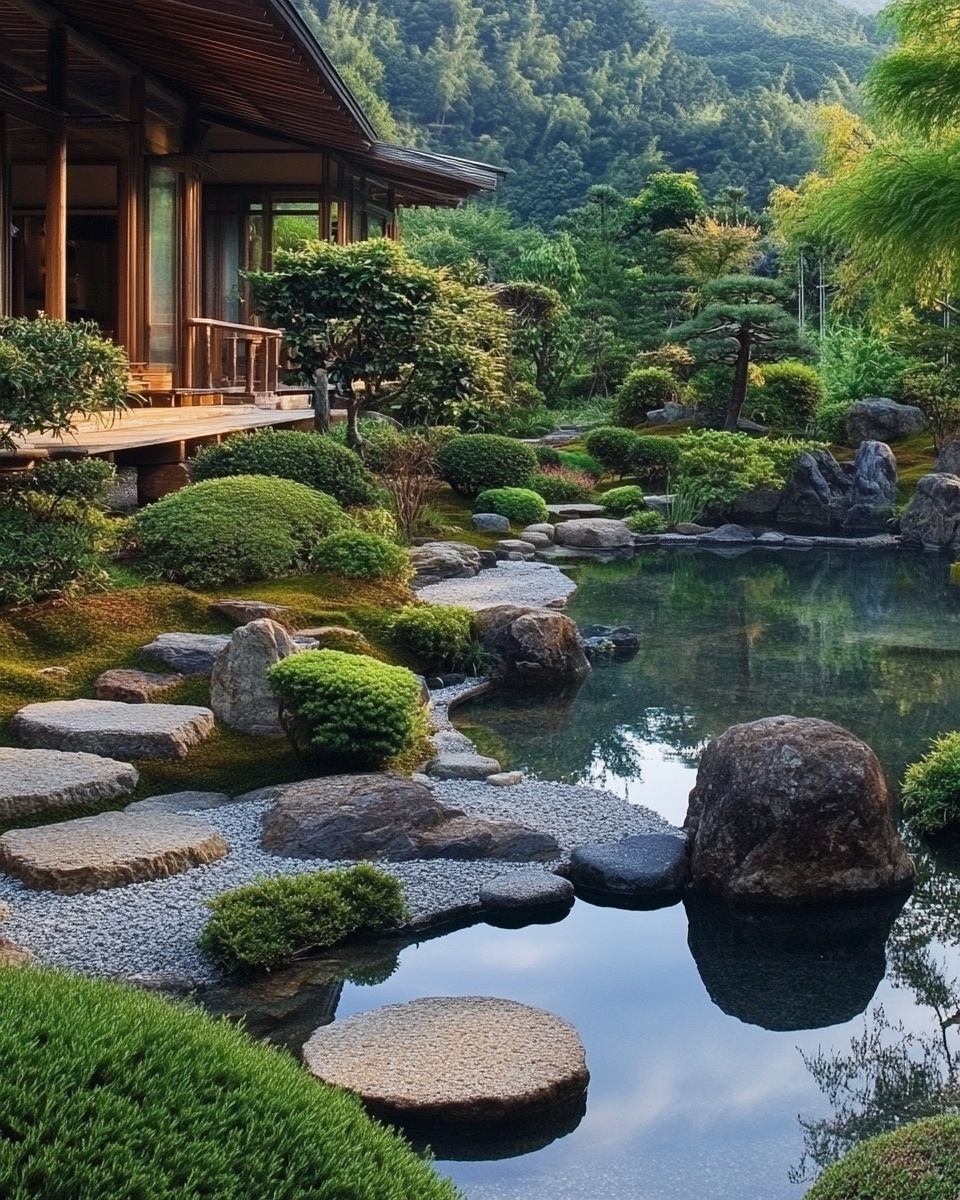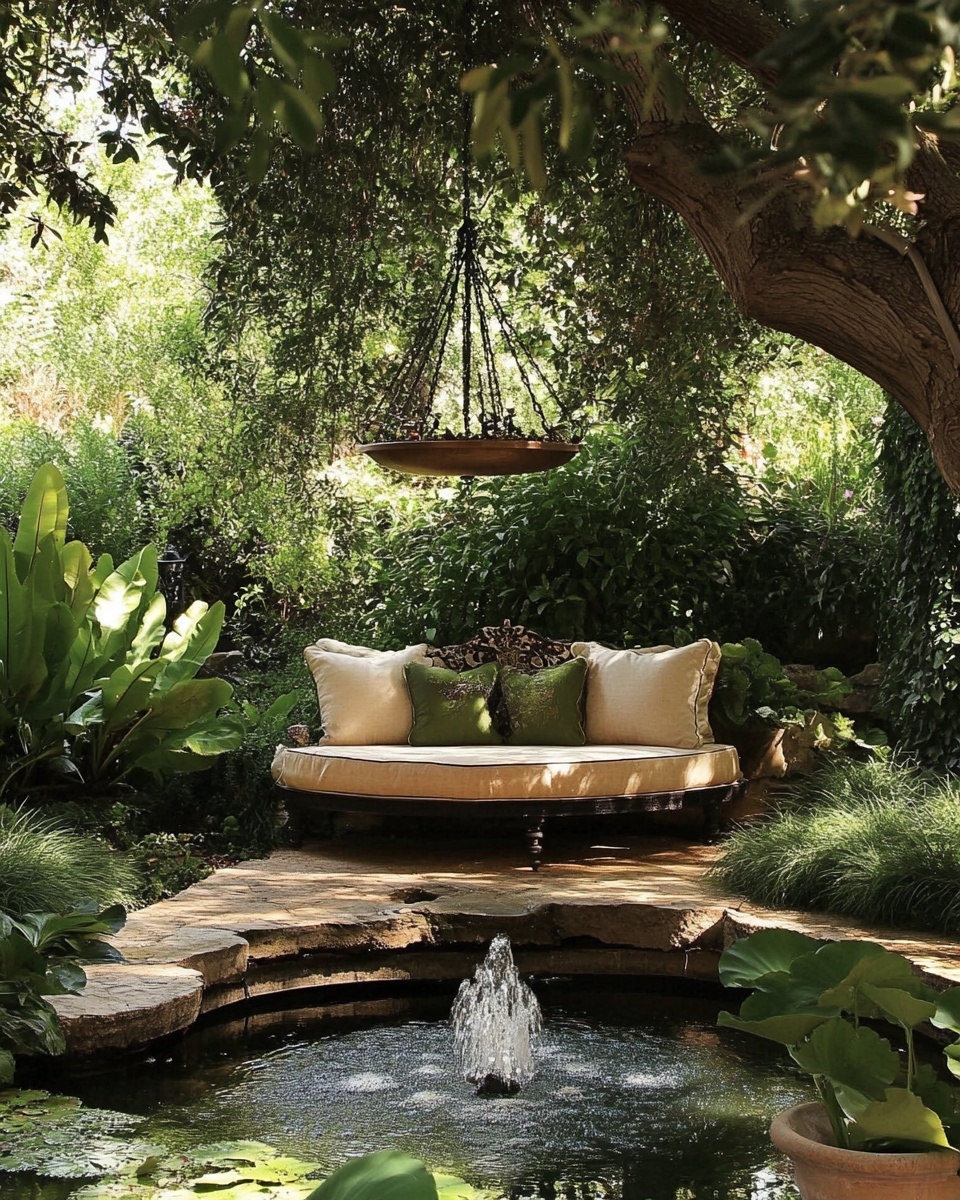Introduction
Ever gazed at a drab corner of your home and wondered if there was a simple, yet profound way to breathe life into it? You're not alone. Many believe that transforming indoor spaces with greenery requires a green thumb or extensive knowledge, but that couldn’t be further from the truth. The secret to creating personal sanctuaries lies in thoughtful Indoor Plant Decor Ideas, turning every room into a vibrant oasis. Forget sterile interiors; imagine your home alive with texture, color, and a sense of calm. This guide will unlock the secrets to effortless indoor plant styling, proving that anyone can cultivate beauty, regardless of their gardening experience.
Tools & Materials Needed
Embarking on your indoor plant decor journey is exciting, and with the right tools, it’s also incredibly simple. You won't need a lavish garden shed, just a few essentials:
- Pots and Planters: Beyond aesthetics, choose pots with drainage holes to prevent root rot. Terracotta is excellent for breathability, while ceramic or plastic options offer a wide range of styles. For an eco-friendly approach, consider repurposing old ceramic mugs, tin cans (drill drainage holes!), or even woven baskets lined with plastic.
- Potting Mix: Not all soil is created equal. A good quality indoor potting mix is crucial. Look for one specifically designed for houseplants, often sterile and incorporating perlite or vermiculite for better drainage.
- Small Trowel or Scoop: Essential for handling soil and transferring plants without making a mess.
- Watering Can with a Fine Spout: Allows for precise watering, preventing overwatering or splashing soil.
- Pruning Shears/Scissors: For trimming dead leaves or shaping your plants. Small household scissors work fine for most indoor plants.
- Gloves (Optional): To keep your hands clean, especially when dealing with prickly plants or irritant soils.
- Decorative Elements: Think pebbles, moss, small stones, or even decorative stakes to add a finishing touch to your Indoor Plant Decor Ideas.
Time & Effort Overview
Integrating plants into your home decor is surprisingly low-effort for the significant aesthetic and well-being returns. Most basic setups can be completed in under an hour, depending on how many plants you’re arranging. For example, arranging a small cluster of succulents takes about 15-20 minutes from unboxing to display. Compared to outdoor gardening projects, which can demand hours of digging and weeding, indoor plant care is generally 80% faster and less strenuous.
The ongoing maintenance is also manageable. Most houseplants require watering weekly or bi-weekly, taking mere minutes. Pruning and occasional repotting might add up to an hour every few months. This makes it a beginner-friendly project. If you can remember to water your plants once a week, you're well on your way to a thriving indoor garden. It’s definitely a beginner-level endeavor that yields expert-level results when it comes to enhancing your living space.
Step-by-Step Gardening Process
Step 1: Choosing Your Plants
Start by assessing your space. Do you have bright, indirect light, or is it a bit dim? Research plants that thrive in those conditions. For example, Snake Plants and ZZ Plants are perfect for low light, while Fiddle Leaf Figs need bright, indirect light. Select plants that complement your existing decor and personal style. Don't worry if you’re unsure; many plant nurseries categorize plants by light requirements. Opt for diversity in leaf shape, size, and texture for visual interest – this is key to interesting Indoor Plant Decor Ideas.
Step 2: Gathering Your Materials
Once you have your plants, collect your chosen pots, potting mix, trowel, watering can, and any decorative elements. Ensure your pots are clean and have drainage holes. If using a decorative pot without drainage, place your plant in a slightly smaller nursery pot with drainage, then set it inside the larger decorative pot. This technique, called "cachepotting," is a lifesaver for easily managing water.
Step 3: Repotting (If Necessary)
Gently remove the plant from its nursery container. If the roots are tightly bound (root-bound), gently tease them apart. Add a layer of fresh potting mix to the bottom of the new pot. Place the plant in the center and fill around it with more potting mix, leaving about an inch of space from the rim. This prevents soil from spilling out when you water. Lightly pat down the soil – avoid compacting it too much, as roots need air.
Step 4: Initial Watering
After repotting, water your plant thoroughly until water drains from the bottom. This helps settle the soil and provides crucial hydration. For cachepots, always remove the plant from the decorative pot for watering, allow it to drain completely, then return it. Don't worry if all the soil doesn't absorb water immediately; consistency is key.
Step 5: Strategic Placement
Now for the fun part: decor! Place your newly potted plants in their designated spots, considering both their light requirements and aesthetic appeal. Group plants of varying heights and foliage types for a dynamic display. Think about contrast – a tall, slender plant next to a bushy, low-growing one. Ensure they aren’t too crowded, allowing for good air circulation.
Growth & Care Tips
Consistent care is the bedrock of healthy plants and long-lasting Indoor Plant Decor Ideas.
- Watering Frequency: The most common mistake is overwatering. Instead of sticking to a rigid schedule, check the soil moisture. Stick your finger about an inch or two into the soil. If it feels dry, it's time to water. Most plants prefer slightly dry soil between waterings. For example, cacti and succulents can go much longer, often needing water only every 2-4 weeks. Data shows that approximately 60% of houseplant deaths are attributed to overwatering.
- Sunlight Exposure: Understand your plant’s light needs. "Bright, indirect light" often means near a window but not in direct, scorching sunlight. "Low light" means further from a window or in a room with less natural illumination. Rotate your plants weekly to ensure even growth and prevent them from leaning towards the light source.
- Pruning: Regularly remove yellowing or dead leaves. This not only keeps your plant looking tidy but also redirects energy to healthy growth. Use clean, sharp shears or scissors.
- Fertilization: Most indoor plants benefit from a balanced liquid fertilizer during their active growing season (spring and summer), typically once a month. Reduce or halt fertilization during dormancy (fall and winter). Always follow package instructions and err on the side of under-fertilizing.
- Pest Prevention: Inspect your plants regularly for signs of pests like spider mites or mealybugs. Early detection is key. A simple solution of neem oil mixed with water can be an effective organic pesticide. Good air circulation also helps deter pests.
Eco-Friendly & Sustainable Alternatives
Embracing nature indoors doesn't have to come with a carbon footprint. Here's how to make your Indoor Plant Decor Ideas greener:
- Composting: Don't throw out pruned leaves or old potting mix! Start a small indoor compost bin for kitchen scraps and plant waste. This nutrient-rich compost can then be mixed into your potting soil, reducing waste and enriching your plants naturally.
- Natural Fertilizers: Beyond composting, consider alternatives like diluted worm castings, compost tea, or even coffee grounds (for acid-loving plants like ferns) as natural fertilizers.
- Water Conservation: Collect rainwater for your plants, or reuse water from washing vegetables (once cooled and unseasoned). A well-draining pot and checking soil moisture before watering also prevent water waste.
- Small Space Solutions: Not everyone has ample floor space. Consider vertical gardens using wall-mounted planters, hanging baskets (macrame hangers are trendy and space-saving!), or tiered plant stands. Balcony gardens can extend your green space vertically with shelving or railing planters. Reclaimed wooden pallets can be ingeniously transformed into vertical planters.
Creative Ideas & Uses
Beyond simply placing a pot, infuse creativity into your Indoor Plant Decor Ideas:
- Plant Groupings: Create a "plant corner" or "urban jungle" by grouping plants with similar care needs. Vary heights, textures, and pot styles for a visually rich tableau. A tall Fiddle Leaf Fig can anchor a corner, surrounded by trailing Pothos and a compact Peace Lily.
- Repurpose & Upcycle: Old tea cups, vintage glass jars, even a forgotten watering can – all can become unique planters. Just ensure adequate drainage if essential for the plant.
- Living Wall Art: Utilize moss frames or small wall-mounted planters to create a dynamic art piece. Succulents and air plants are particularly good candidates for this, requiring minimal soil. Pinterest is an amazing resource for inspiration: check out this board for endless creative plant decor ideas: https://www.pinterest.com/janatjanay47/
- Terrariums: Create miniature self-contained ecosystems in glass containers. These are perfect for small, humidity-loving plants and add a magical touch.
- Integrate with Furniture: Use plants to soften stark lines of furniture. A trailing plant cascading from a bookshelf or a large-leafed specimen next to an armchair creates warmth and visual interest. Consider using plant stands of varying heights to break up horizontal planes.
Common Mistakes to Avoid
Even seasoned gardeners make mistakes. Being aware of these pitfalls will save you heartbreak and keep your Indoor Plant Decor Ideas thriving:
- Overwatering: As mentioned, this is the number one killer. Roots need oxygen. Saturated soil suffocates them, leading to root rot. Overwatering causes root rot in over 60% of common houseplants. Always check soil moisture before watering.
- Inadequate Drainage: Pots without drainage holes trap water, leading to the same root rot issue. If your chosen decorative pot lacks drainage, use the cachepot method.
- Ignoring Light Requirements: Placing a sun-loving plant in a dark corner or a shade-lover in direct sun will quickly lead to distress. Yellowing leaves often signal too little light, while crispy brown edges can indicate too much.
- Neglecting Pests: Pests spread quickly. Ignoring a few tiny bugs can lead to an infestation. Regular inspection and prompt action are crucial.
- Fertilizing During Dormancy: Plants rest in fall and winter. Fertilizing them during this period can burn their roots. Stick to feeding from spring to late summer.
- Impatience: Plants grow at their own pace. Don't expect dramatic changes overnight. Enjoy the slow, steady process of nurturing life.
Maintenance & Storage Tips
Ensuring the longevity of your indoor garden involves a few routine practices:
- Repotting: As plants grow, they may become root-bound. Repot into a slightly larger pot every 1-2 years during the growing season. Signs of a root-bound plant include roots growing out of drainage holes or stunted growth.
- Cleaning Leaves: Dust can accumulate on plant leaves, hindering photosynthesis. Gently wipe leaves with a damp cloth every few weeks. This also gives you a chance to inspect for pests.
- Addressing Yellow Leaves: Yellow leaves often indicate overwatering, nutrient deficiency, or too little light. Assess your care routine and make adjustments. If it's just the oldest, lowest leaves, it might be natural aging.
- Poor Soil Drainage: If your soil stays soggy for too long, it might be too dense. Amend it with perlite or coarse sand to improve drainage and aeration.
- Storing Seeds (If applicable): While less common for indoor decor plants, if you harvest seeds, store them in a cool, dark, dry place in an airtight container to maintain viability.
Conclusion
Transforming your home with Indoor Plant Decor Ideas is an incredibly rewarding journey. From the calming presence of lush greenery to the aesthetic appeal it adds to any room, houseplants are more than just decoration; they're living art that contributes to your well-being. By choosing the right plants for your space, understanding their basic needs, and applying these practical tips, you can cultivate a vibrant, serene indoor oasis. Don’t be afraid to experiment, repurpose, and let your creativity bloom. Every leaf, every tiny bud, is a testament to the life you're nurturing.
Are you ready to greenify your home and embrace the beauty of indoor plants? Share your favorite plant decor ideas in the comments below, or better yet, snap a photo and tag us on social media! Let’s inspire each other to create stunning living spaces. You may also enjoy reading about how to grow your own produce, perhaps starting with {"loc":["https://pincraftpro.com/how-to-grow-tomatoes-in-pots-2/"],"lastmod":["2025-10-08T15:09:24+00:00"]} for a taste of fresh, homegrown goodness.
FAQ
Q1: How do I know if my plant is getting enough light?
A1: Generally, plants reaching or stretching towards a window indicate insufficient light. Pale, yellowing leaves could also signify this. Conversely, brown, crispy edges can mean too much direct sunlight. Observe changes in growth and leaf color to adjust.
Q2: What are the best indoor plants for beginners?
A2: For those just starting their Indoor Plant Decor Ideas journey, great choices include Snake Plants (Sansevieria), ZZ Plants (Zamioculcas zamiifolia), Pothos (Epipremnum aureum), and Spider Plants (Chlorophytum comosum). They are incredibly forgiving and tolerant of various conditions.
Q3: How often should I fertilize my indoor plants?
A3: Most indoor plants benefit from fertilization every 2-4 weeks during their active growing season (spring and summer), using a diluted liquid fertilizer. Reduce or stop entirely during fall and winter when plants are dormant. Always follow product instructions.
Q4: My plant’s leaves are turning yellow. What’s wrong?
A4: Yellowing leaves are often a sign of overwatering, nutrient deficiency, or insufficient light. Check the soil moisture first; if it's soggy, you're likely overwatering. If dry, it might be underwatering or a nutrient issue. Consider its light exposure and adjust accordingly.
Q5: Can I use outdoor potting soil for my indoor plants?
A5: It’s best to use potting mix specifically formulated for indoor plants. Outdoor soil can be too dense, may contain pests, weed seeds, or diseases, and often doesn't drain well enough for indoor environments, potentially harming your Indoor Plant Decor Ideas.
Q6: What if my pot doesn't have drainage holes?
A6: If your decorative pot lacks drainage, use the "cachepot" method. Keep your plant in a slightly smaller nursery pot with drainage holes, then place this inside the decorative pot. Remove the plant when watering, allow it to drain fully, then return it. This prevents waterlogging and root rot.
Q7: How do I keep pests away from my indoor plants naturally?
A7: Regular inspection is key. Wipe leaves gently to remove dust and early signs of pests. A diluted neem oil spray or insecticidal soap can effectively treat common pests like spider mites and mealybugs. Good air circulation also helps deter them.
